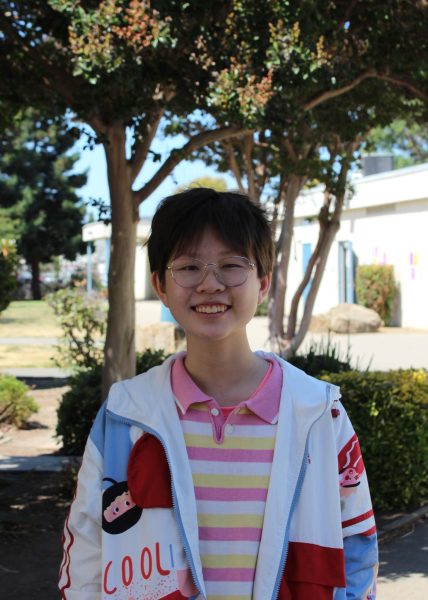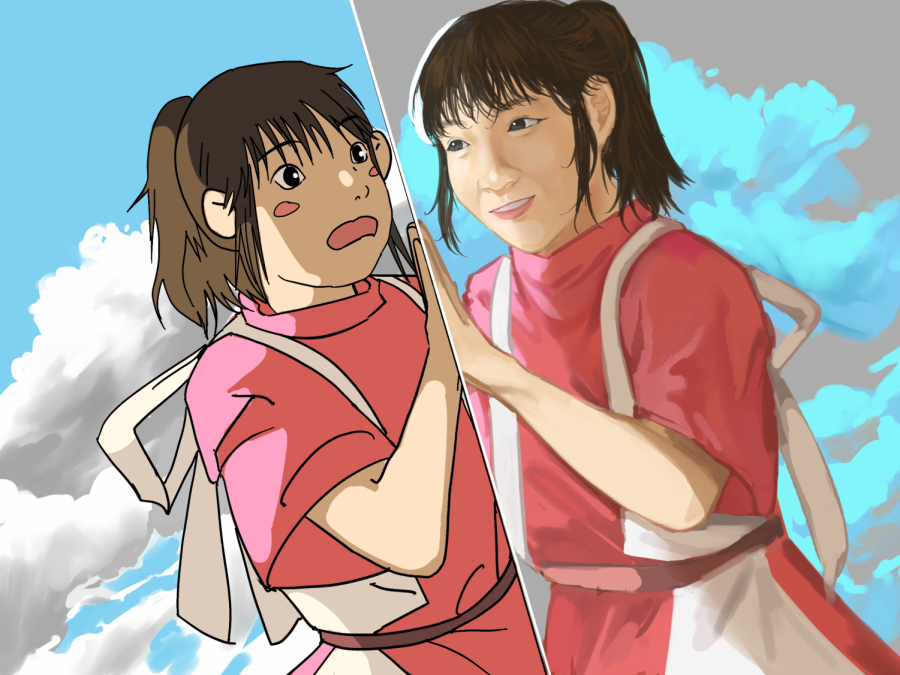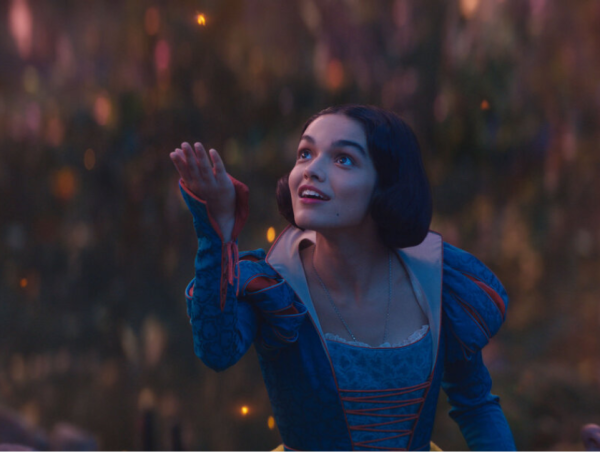Appreciate the Artistry of Animation
Chihiro confronts herself in an alternate reality which, with lifelike elements, lacks the magic of her original movie.
Since the early 1920s when cartoons were novel, animation has become a staple of modern media. It excites the imagination and pushes boundaries of storytelling. It is often children’s introduction to film and television, yet still speaks to the hearts and minds of adults. Unfortunately, in recent years, American studios have been pulling this staple out in favor of photorealism. Preserving the unique artistry and styles in animation is necessary because of animation’s creative capabilities and emotional impact.
Stylized animation’s abilities are unique. Animation is hand-drawn, stop-motion, and/or computer-generated. As animation software technology improves, so do the quality and photorealism of computer-generated imagery (CGI). 2D animation can never look lifelike because it is missing a dimension. However, 2D animated films possess an inherent timelessness: 2D animation may age, but it often does not get old. The art of Sleeping Beauty (1959) has aged gracefully, still visually stunning 63 years later. Viewers need to immerse themselves into fictional worlds to connect with them. Aging 2D animation retains verisimilitude, or believability within itself, while photorealistic CGI animation becomes outdated, entering the uncanny valley and compromising its immersiveness.
This type of photorealism limits the ideas and stories film and television can explore. 2019’s live-action—no, CGI remake of Disney’s The Lion King is infamous for taking the imagination and expressiveness out of the original and replacing them with photorealism. It feels wrong for a savannah straight out of National Geographic to have elements like talking animals, and the stoic faces of animals singing about flatulence certainly don’t help. Photorealism juxtaposed with fantasy creates a jarring experience for the viewer. The movie comes off as an opportunity for Disney to show off how impressive its CGI looks without the movie actually being impressive, part of a growing trend of replacing art with realism in films that are better off fantastical and cartoonish.
Stylistic choices in animation have immense emotional impact. People remember the animated films they grew up with and their messages because of their artistry. Take Studio Ghibli: Ghibli films’ tender, hand-drawn art serves to emphasize their themes of humanity. Their memorable art style contributes to their magic. Stylistic CGI can also ignite the imagination, even if it feels less hand-made. Yet Disney continues to squeeze live-action and photorealistic CGI franchises out of animation that touched the hearts of generations. Editing live action films with CGI does not capture the imagination in the same way. Most recently, Disney attempted a Pinocchio redo, capitalizing on perceived nostalgia while erasing the soul the original had. The title character embodied the essence of animation: the bringing of an inanimate object to life. Instead of attempting to make the most of its new medium and occasion to improve upon the original, it’s just another photorealistic Disney remake. Its Pinocchio has dead eyes. Without believability or creativity, photorealism cannot elicit emotional reactions from people through immersion. Losing stylized animation means losing a way to reach people’s emotions.
Recognizing artists is vital to preserving stylized animation. Currently, television network HBO is deleting animated series off the face of their streaming platform with no regard to the creators that made them. It isn’t just HBO: Disney, Netflix, and Warner Brothers have all canceled upcoming animated projects. Disney has completely stopped making 2D-animated movies. There is some hope: studios like Sony Animated Pictures have made tremendous efforts in exploring new rendering styles. Spider-Man: Into the Spider-Verse (2018) blends 2D animation with 3D to create an exciting comic-book look. Sony encourages its artists to take risks and challenge the status quo of photorealism. To value animation, corporations must value animators, allowing them to create art.
In a time when entertainment companies believe people only see movies and television for spectacle and nostalgia, traditional animation and original ideas risk dying out. Entertainment corporations stamp out originality in favor of soulless nostalgia bait. After all, why use your imagination when you can make more money by imagining less? Many argue that the medium does not even matter. However, when movies are devoid of stylized art, we as viewers absorb less from what we watch. Without stylized animation, we leave less to our imaginations, feel less emotion, and experience less wonder.








